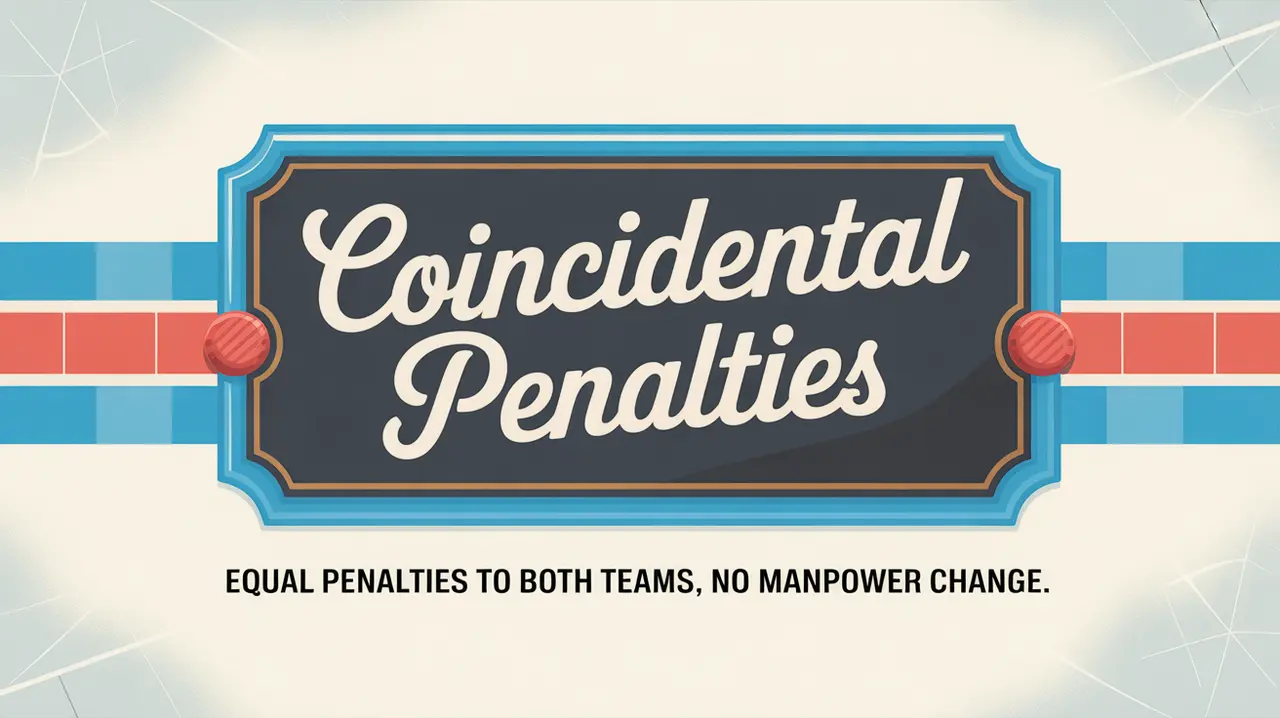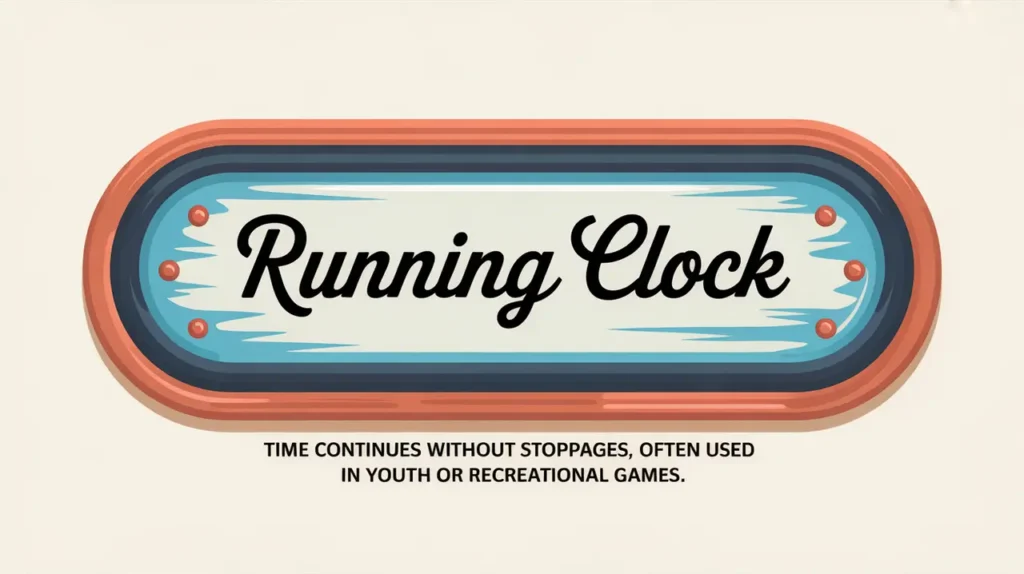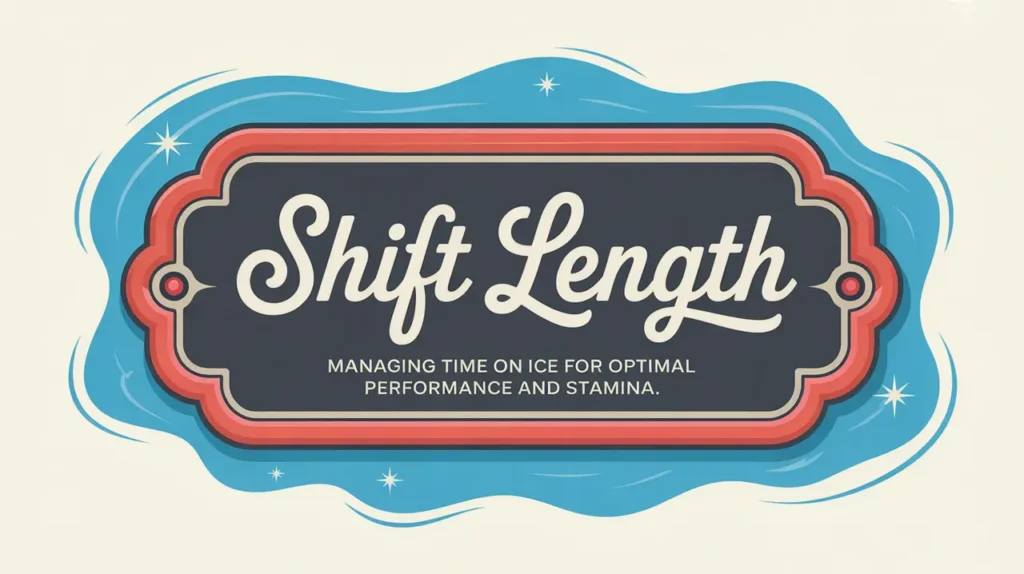Jim’s Intro to Coincidental Penalties
Hi folks, Jim here, the only commentator who once saw two guys get coincidental penalties and yelled “Twinsies!” over the public address system.
What are coincidental penalties?
Coincidental penalties occur when players from opposing teams commit penalties at the same stoppage or on the same play, resulting in both teams being penalized at the same time. These penalties are usually minor penalties, but can also involve majors or misconducts depending on the situation. The key detail is that no team gets a power play when the penalties are equal in number and type. Instead, both teams play at even strength, typically 4-on-4 if one player from each team goes off.
Coincidental penalties keep the game fair while ensuring both infractions are punished equally.
How does it work?
Here’s the basic sequence for coincidental penalties:
- Simultaneous Infractions: Two (or more) players commit penalties on the same play or stoppage.
- Referee Assessment: The officials call matching penalties to players from each team.
- No Manpower Advantage: If the number and type of penalties are identical, the teams skate at even strength, typically 4-on-4 if both teams lose one skater.
- Time Runs Concurrently: Both players serve their penalties at the same time. They return at the first whistle after their time expires.
- Faceoff Location: The faceoff typically occurs at the nearest neutral zone dot unless other rules dictate otherwise.
When there’s a difference in penalty types or numbers, the manpower situation may change. For example, if one team takes a minor and the other takes a double minor, the team with the lesser penalty ends up shorthanded after the first two minutes expire.
Common Situations Leading to Coincidental Penalties
- Roughing Scrums: Two players start shoving after the whistle, both get minors.
- Mutual Obstruction: Players interfere with each other away from the puck.
- Fights: Two players drop the gloves and both receive majors.
- Offsetting Minors on Breakaways: One defender hooks, the attacker retaliates. Both get called.
How do you make good decisions with it?
Smart coincidental penalty decisions come down to emotional control and situational awareness.
- Avoid Unnecessary Scrums: Late shoves or chirps often end up with both players sitting.
- Pick Your Battles: If the game is tight, taking a matching penalty might not hurt your team, but losing discipline at the wrong time can.
- Don’t Retaliate: Often, the first infraction is missed and the retaliation is caught. If you keep your cool, your team gets the power play instead.
- Know the Score and Situation: Sometimes matching minors open up 4-on-4 play, which benefits fast, skilled teams. Other times, it disrupts your line rhythm.
How do you master it?
Mastering coincidental penalties is about understanding when to engage and when to walk away. Veteran players can draw matching calls when advantageous, or avoid retaliating to keep the power play. Coaches teach players to maintain control, especially late in games when every minute matters.
What does it look like when done right?
When teams handle coincidental penalties well, they stay composed, adjust line combinations for 4-on-4, and use the open ice strategically. Skilled teams often thrive in these situations, turning neutral calls into momentum swings with smart puck movement and speed.
Commentator’s Corner
Jim’s Take
I’ve seen more players hurt their teams by losing their temper in scrums than by any trip or hook. If you keep your cool, you control the narrative.
Parent Tip
Help young players understand that walking away isn’t weakness. It’s strategic. Drawing penalties instead of matching them gives their team a real edge.
Player Tip
Retaliation feels good in the moment, but power plays feel better. Learn to pick your spots.
A Final Thought
Coincidental penalties don’t give anyone an advantage on the scoreboard, but they shape the flow of the game. Control your response, read the situation, and use the open ice to your team’s benefit.









